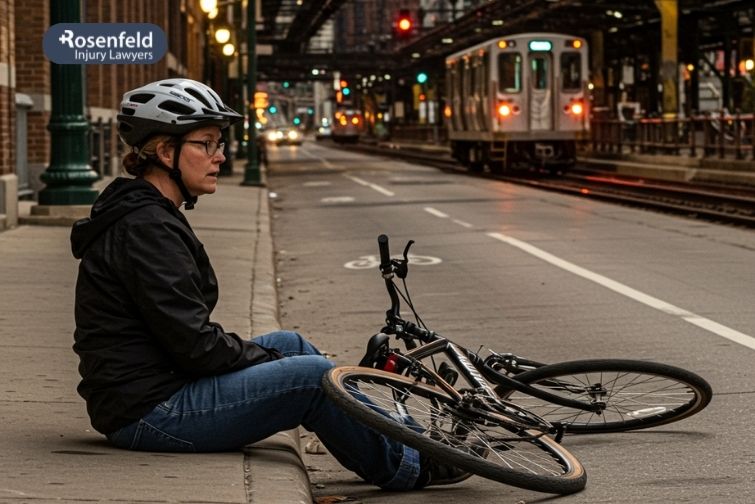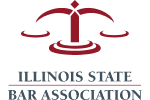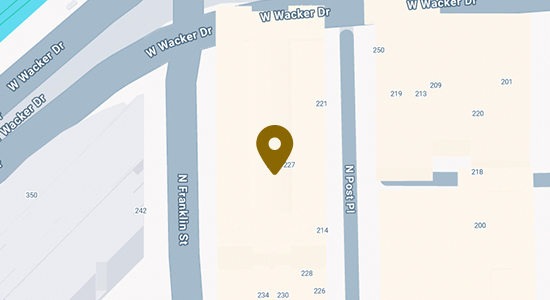Accident Lawyer
Milwaukee Avenue Bike Accidents in Chicago

Chicago Law Firm Helping Recover Compensation for Bicycle Injuries on Milwaukee Avenue
Milwaukee Avenue is one of Chicago’s most heavily used bike corridors, running from the city’s northwest edge near Devon Avenue through neighborhoods like Portage Park, River West, and Wicker Park.
Known as Chicago’s busiest cycling route, it connects riders to downtown and major transit lines, making it a favorite among commuting cyclists and messengers. Its layout and access to bike lanes make it a key part of the city’s transportation network, but also a hotspot for crashes.
With frequent bike lane obstructions, protected bike lanes that are often ignored, and high volumes of northbound traffic, bike accidents on Milwaukee Avenue happen every day. If you’ve been hit, injured, or forced into traffic because of a blocked lane or reckless driver, a Chicago bike accident attorney can help you recover compensation and understand your legal rights.
Why Milwaukee Avenue Is Risky for Cyclists
Milwaukee Avenue is often called Chicago’s busiest bike lane, but many cyclists argue it’s also one of the most dangerous. The street cuts through neighborhoods like Wicker Park, West Town, and River West, and while it’s part of the city’s arterial cycling hub, its design creates constant hazards.
Parts of Milwaukee Avenue’s bike lane system lack proper separation from traffic. Even where protected bike lanes are separated by posts or curbs exist, drivers routinely ignore them, using them as loading zones or parking spots.
Many cyclists report daily conflicts with delivery trucks, rideshare vehicles, and city cleanup crews. These violations are so common that activists have launched initiatives like Bike Lane Uprising, a bike lane activist group that tracks and reports bike lane obstructions. In 2023, the city recorded record bike lane obstructions and issued a surge of bike lane violation tickets, yet enforcement remains inconsistent.
One notorious stretch is the busy Wicker Park intersection near North, Damen, and Milwaukee, where multiple cyclists have been hit or forced into northbound traffic lanes. The area around West Erie Street has also been the site of repeated crashes, including a fatal hit-and-run crash that led to a ghost bike dedicated to the victim.
The layout of Milwaukee Avenue, with its mix of parked cars, sudden merges, and unclear signage, contributes to frequent bike lane crashes. Some intersections lack visibility, while others see drivers turning without checking the bike lane, putting cyclists at direct risk.
Despite being a key part of Chicago’s cycling infrastructure, Milwaukee Avenue’s failed dreams of safe passage continue to frustrate riders and safety advocates. Until enforcement and design improve, the dangers persist.

Common Injuries and Accidents Reported on Milwaukee Avenue
Cyclists involved in accidents often suffer serious injuries due to the street’s dangerous conditions and daily conflicts with drivers. Some of the most common injuries reported include:
- Broken bones and fractures, especially wrists, arms, and collarbones;
- Concussions and other head injuries from being thrown off a bike;
- Spinal injuries and back trauma;
- Severe road rash and skin lacerations;
- Dental and facial injuries from a sudden impact with the pavement or a vehicle.
These injuries frequently result from predictable patterns along Milwaukee Avenue, where bike lanes—whether marked or protected—are routinely ignored or blocked.
One of the most common crash types is dooring, when a parked car opens its door into the bike lane, giving the cyclist no time to avoid a collision. This is especially likely near older sections like the North Avenue bike lane or the block of North Milwaukee, where drivers park close to the curb.
Sideswipes and right hook turns also lead to crashes when cars overtake a cyclist and turn abruptly without yielding. These situations often happen during rush hour, when northbound traffic lanes are crowded and drivers cut across Milwaukee Avenue bike lanes to turn or park.
In busy city streets, riders must frequently swerve around parked cars or delivery trucks, increasing their exposure to moving traffic. Even a slight miscalculation can result in a crash that leads to an emergency room visit cost that many aren’t prepared to handle.
Cycling advocates and groups like Bike Lane Uprising have documented these repeated hazards, underscoring how Milwaukee Avenue’s dangerous bike lane conditions contribute to rising injuries among daily commuters and recreational riders alike.
Relevant Chicago Ordinances and Infrastructure on Milwaukee Avenue
Milwaukee Avenue is a key part of the Chicago Bike Network and is formally recognized by the Chicago Department of Transportation (CDOT) as a central corridor in the city’s cycling infrastructure. Yet despite being labeled “Chicago’s busiest bike lane,” the protections for cyclists along this stretch are often minimal or inconsistently enforced.
Under Chicago Municipal Code § 9-36-010(c), motorists must maintain at least three feet of clearance when passing a bicyclist on any roadway, including Milwaukee Avenue. Violating this rule can result in a ticket, and if a collision occurs, it may serve as evidence of driver negligence.
Additionally, § 9-40-060 prohibits motorists from driving or parking in designated bike lanes unless they are turning or avoiding an obstruction, and only if it’s safe to do so. However, enforcement of this rule is spotty, and the city has issued thousands of bicycle lane violation tickets, especially on Milwaukee Avenue, where obstructed bike lanes are an everyday issue.
Milwaukee Avenue features a mix of unprotected and barrier-protected bike lanes, depending on the block. CDOT has installed protected bike lanes separated by plastic bollards or curbs in high-traffic areas, but many of these installations end abruptly or are worn down by constant vehicle contact.
According to CDOT’s Citywide Bikeways Plan (2023), Milwaukee Avenue remains a priority for further improvements, especially through Wicker Park, West Town, and up to Irving Park and Chicago’s northern border.
Despite being a focal point in the citywide cycling infrastructure plan, cyclists continue to report unsafe conditions and bicycle lane violations along this corridor, highlighting the need for stronger enforcement and better design.
Fault in Milwaukee Avenue Bicycle Accidents
Determining fault in Milwaukee Avenue bike accidents can be legally complex, especially given the constant interaction between cyclists, drivers, pedestrians, and parked vehicles along this high-traffic corridor. Unlike some quieter residential areas, Milwaukee Avenue presents layered risks that often blur the lines of liability.
One common scenario involves drivers turning right across the bike lane without yielding to cyclists traveling straight.
These right hook turns frequently happen in areas like the busy Wicker Park intersection, where drivers are focused on oncoming traffic or pedestrians, not the cyclist beside them. Even if the bicycle lane is clearly marked, a driver may claim the cyclist was speeding or “came out of nowhere,” shifting blame.
Parked cars opening doors into the bike lane—also known as dooring—is another major cause of crashes. In these cases, the person who opened the door is typically at fault under Illinois law, which requires vehicle occupants to check for traffic before opening a door into the path of moving vehicles, including bikes.
Then there’s the issue of bike lane obstructions. If a delivery truck parks in the bicycle lane, forcing a cyclist into the northbound traffic lane, and a crash follows, both the driver who hit the cyclist and the vehicle that caused the obstruction could share responsibility. In reality, however, insurance companies often try to push fault onto the cyclist.
Some blocks of North Milwaukee Avenue also include alleyways and side streets where drivers pull out without complete visibility. If a car exits suddenly from an alley and strikes a cyclist, the driver is often presumed to be at fault—but if the cyclist was riding on the sidewalk or against traffic, partial blame may be assigned.
Because of these complexities, cyclists injured in Milwaukee Avenue crashes should consult a Chicago bike accident attorney to understand their rights fully.
Steps to Take After a Bike Accident on Milwaukee Avenue
If you’re involved in a bike accident on Milwaukee Avenue, what you do in the moments and days after the crash can have a significant impact on your recovery, both physically and financially. Here are the key steps every cyclist should take:
1. Call 911 and Report the Crash
Even if injuries seem minor, always report the crash to the Chicago Police. Ask that an official report be filed, especially if the driver left the scene or there are signs of bike lane violations. A police report helps establish what happened and serves as critical documentation if you pursue a legal claim.
2. Seek Medical Attention Immediately
Go to the nearest emergency room, such as Saint Mary’s Hospital, Norwegian American Hospital, or another nearby facility, depending on your location. Injuries like concussions, fractures, and spinal trauma aren’t always visible right away, and having medical records in place supports your case.
3. Document the Scene
Take photos of your bike, the bicycle lane where the crash occurred, the vehicle, license plates, and any obstructions like parked cars or delivery trucks. Include damage, road conditions, and any signage (or lack of it) that may have contributed to the crash.
4. Get Witness Contact Information
If anyone saw the crash, ask for their name and number. Witnesses can be valuable in establishing fault, especially in cases involving hit-and-run crashes or disputes over lane use.
5. Avoid Speaking with Insurance Companies Alone
The driver’s insurance may call soon after the incident. Do not provide a recorded statement without legal advice. They may use your words to reduce or deny your claim. For help after a North Milwaukee Avenue bike accident, contact a trusted Chicago bike accident attorney who can protect your rights and guide you through the following steps.
How a Chicago Bicycle Accident Lawyer Can Help
If you’ve been injured in a North Milwaukee Avenue bike accident, working with a Chicago bicycle accident lawyer can make a significant difference in how your case is handled—and how much compensation you’re able to recover. Cyclists are often blamed unfairly or pressured into quick settlements. A lawyer steps in to protect your rights and make sure your story is backed by evidence.
An experienced attorney will conduct a thorough investigation. This may include collecting video footage, speaking with witnesses, reviewing Chicago Police reports, and analyzing how bike lane violations, parked cars, or driver negligence contributed to the crash. On a corridor like Milwaukee Avenue, where bicycle lane obstructions are routine, this step is critical to identifying all at-fault parties.
Insurance adjusters may act like they’re on your side, but their job is to minimize payouts. A lawyer communicates directly with the driver’s insurer, protects you from lowball offers, and prevents your words from being used against you.
Time-sensitive evidence like street camera footage, eyewitness accounts, and photos of the bike lane conditions can disappear quickly. Your lawyer will move fast to preserve this material, helping build a strong case for liability.
Beyond medical bills, injured cyclists often face lost income, bike repairs, ongoing therapy, and emotional stress. A lawyer will calculate the full impact of your injuries and fight for compensation that reflects what you’ve truly lost, not just what insurance offers up front.
Whether you were injured near West Erie Street, the North Avenue bicycle lane, or the Wicker Park stretch, legal help can ensure your recovery isn’t sidelined by paperwork, red tape, or blame-shifting.
Secure Expert Legal Counsel Following a Bike Accident on Milwaukee Avenue
If you were injured in a Milwaukee Avenue bike accident, you don’t have to face the aftermath alone. This busy corridor is known for its dangerous traffic, obstructed bike lanes, and daily hazards that put cyclists at risk. Our team at Chicago Bike Injury Lawyers understands the specific challenges riders face on this stretch, from Wicker Park to Irving Park, and we’re here to help.
We’ll investigate the crash, secure key evidence, and handle the insurance companies while you focus on healing. Whether it was a dooring incident, a hit and run, or a bike lane violation, we’ll fight for the compensation you deserve.
Call (312) 646-3708 or fill out our contact form to schedule a free consultation with an experienced Chicago bike accident attorney. Let us stand up for you and your recovery.








